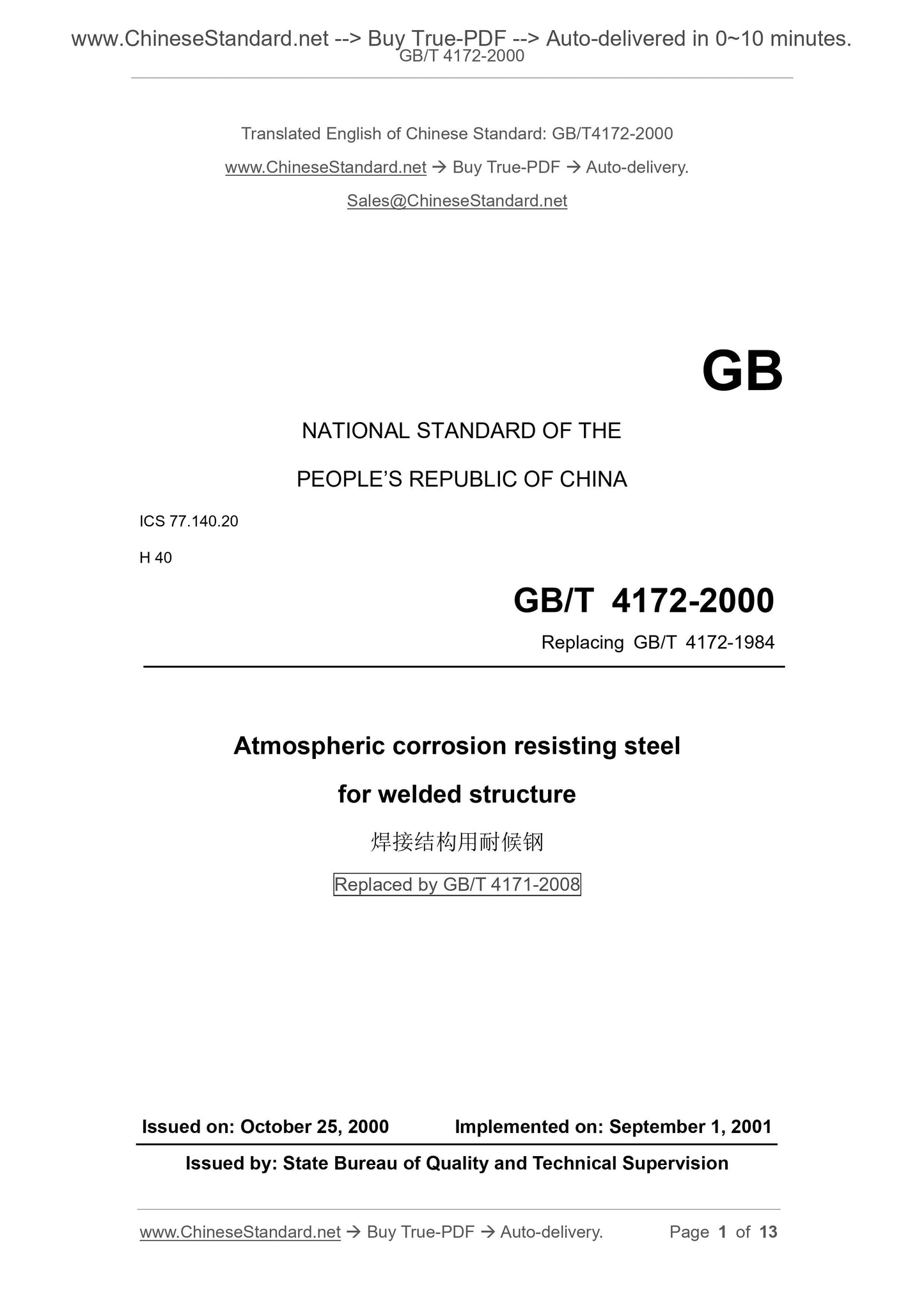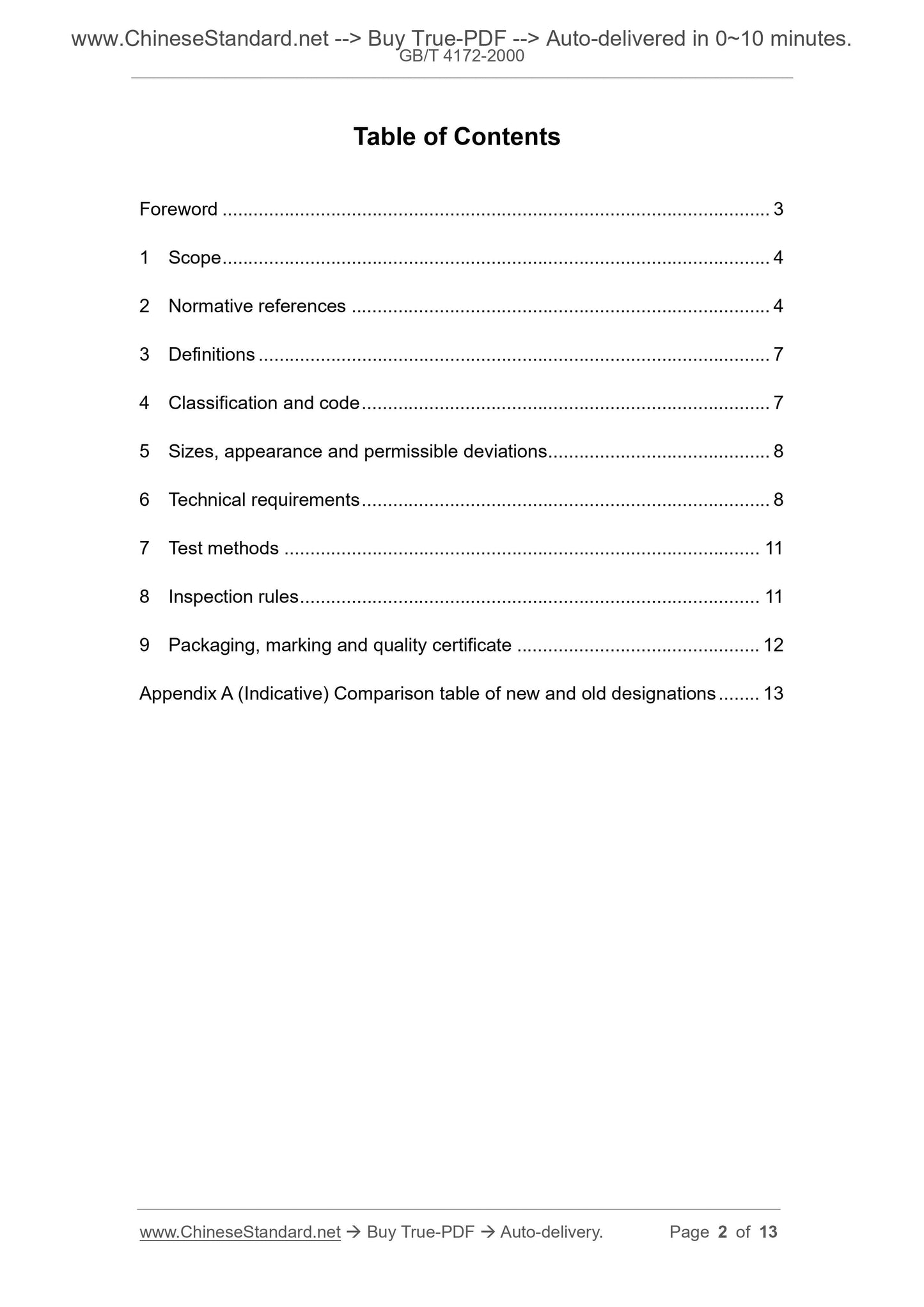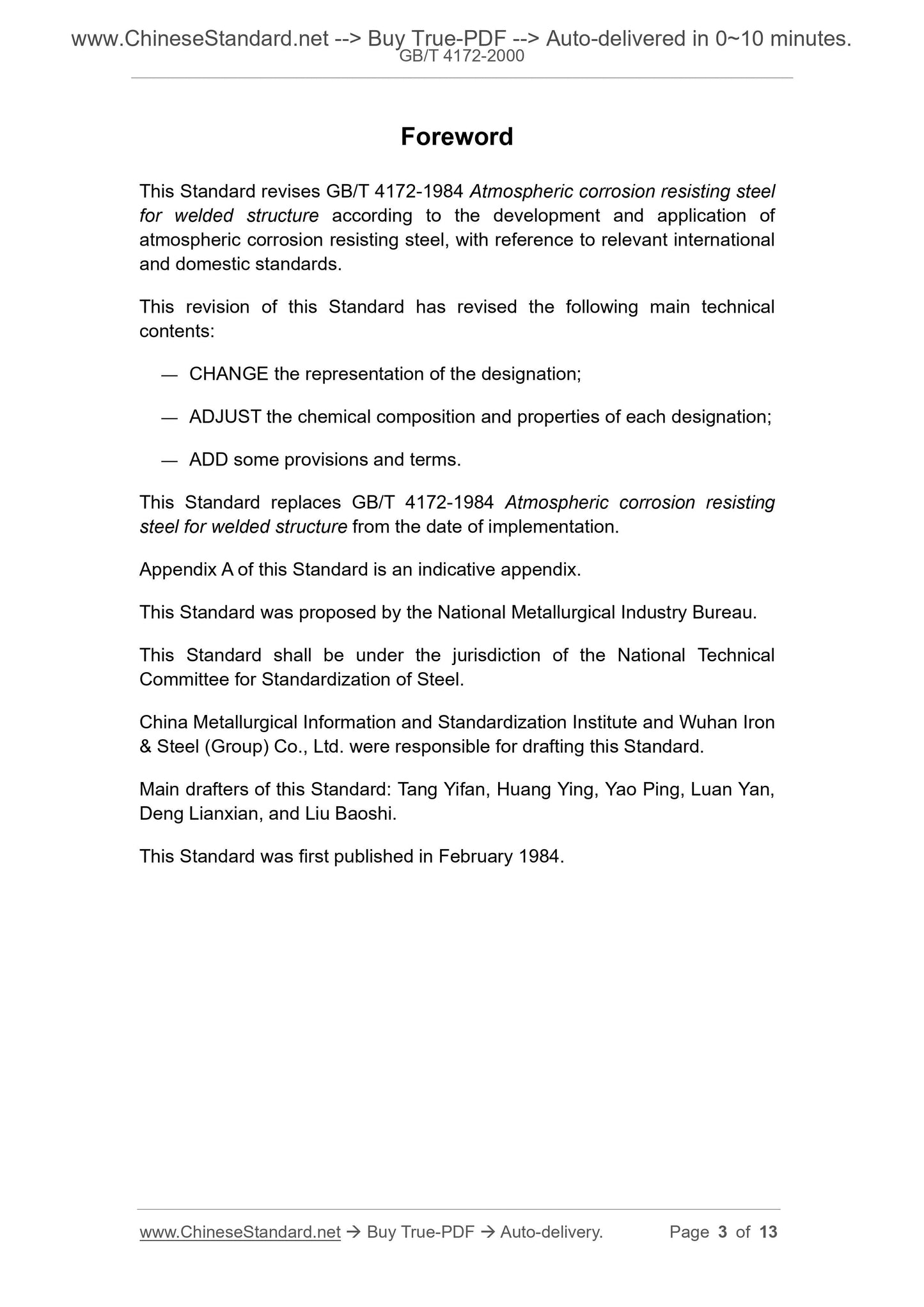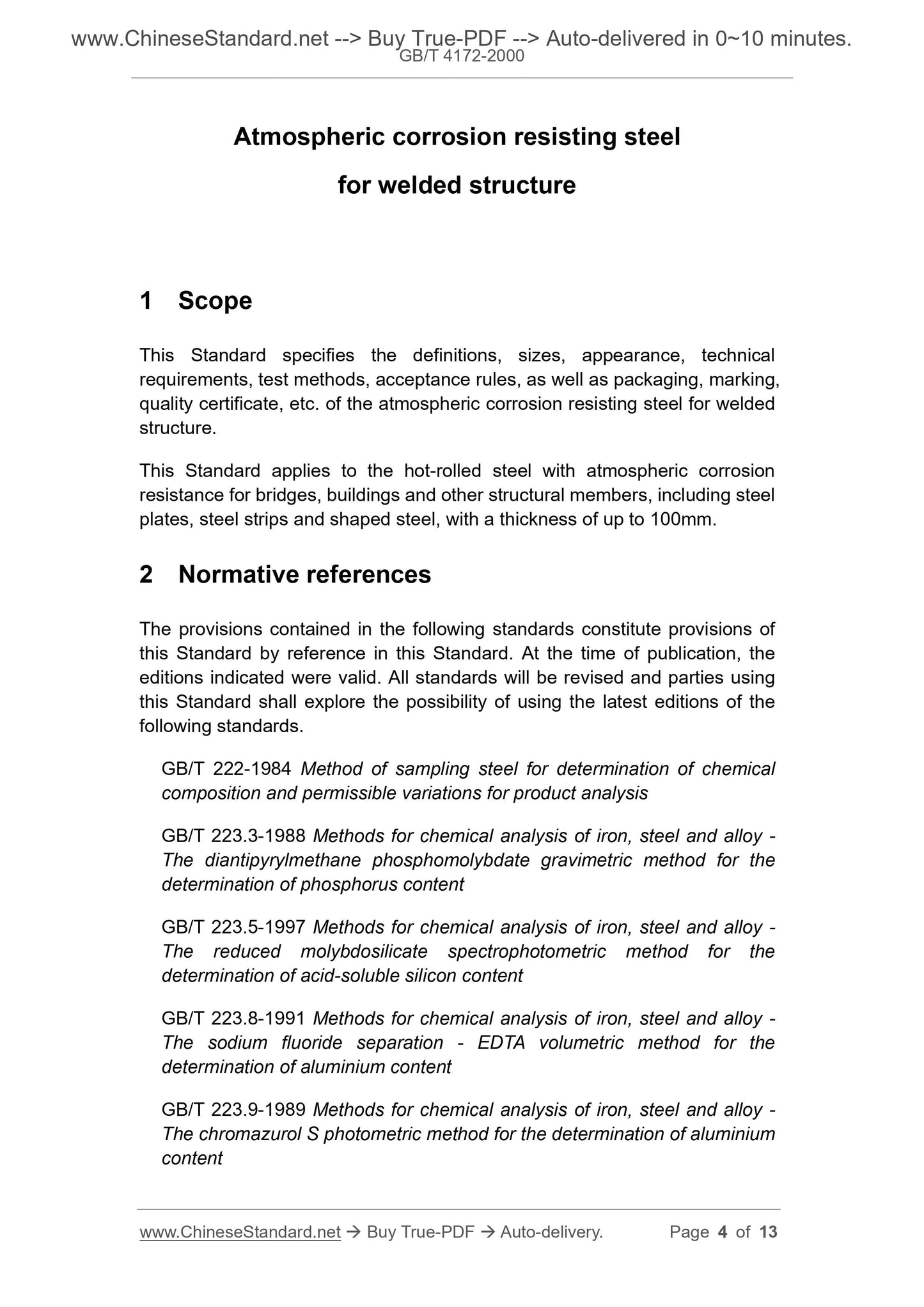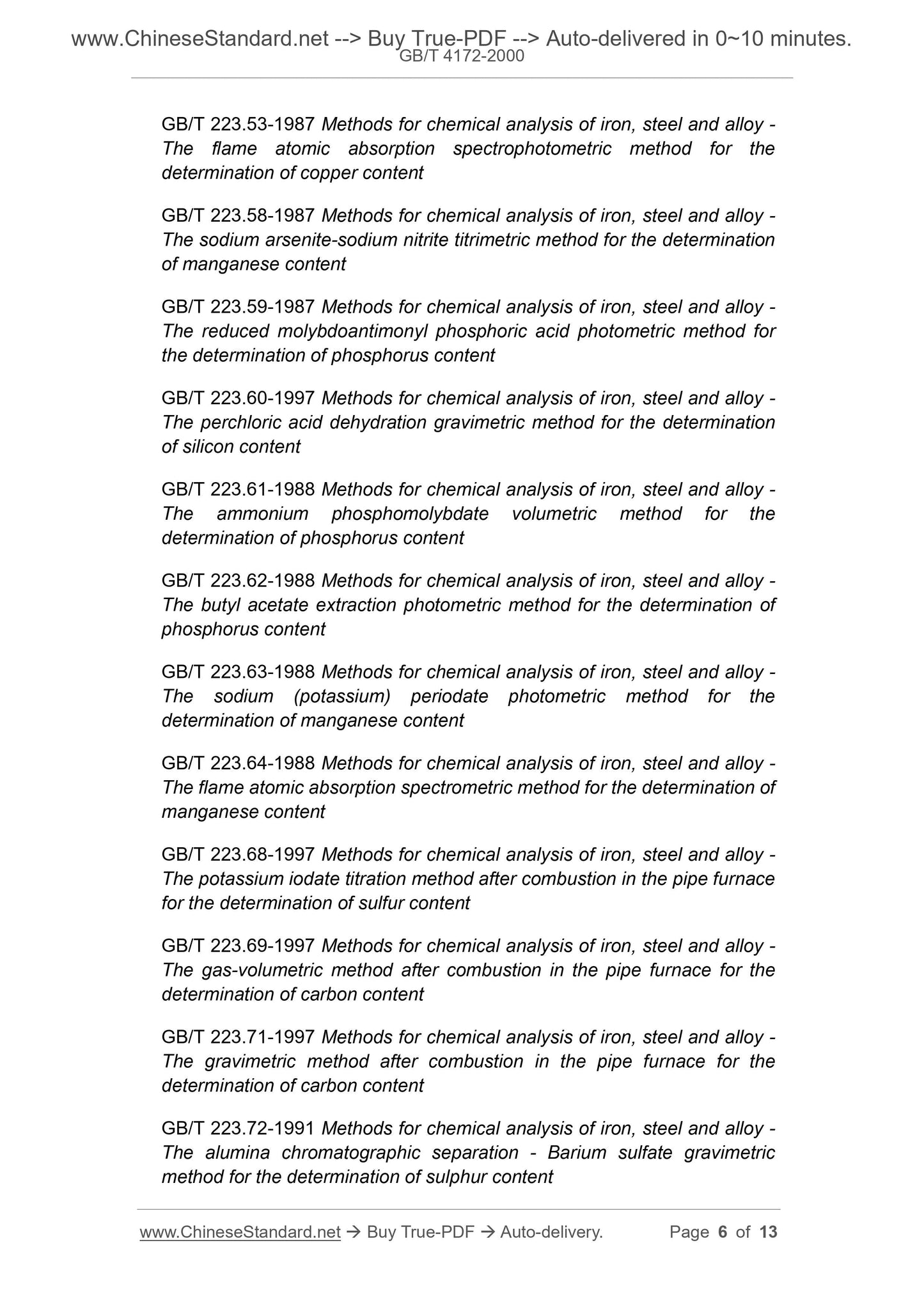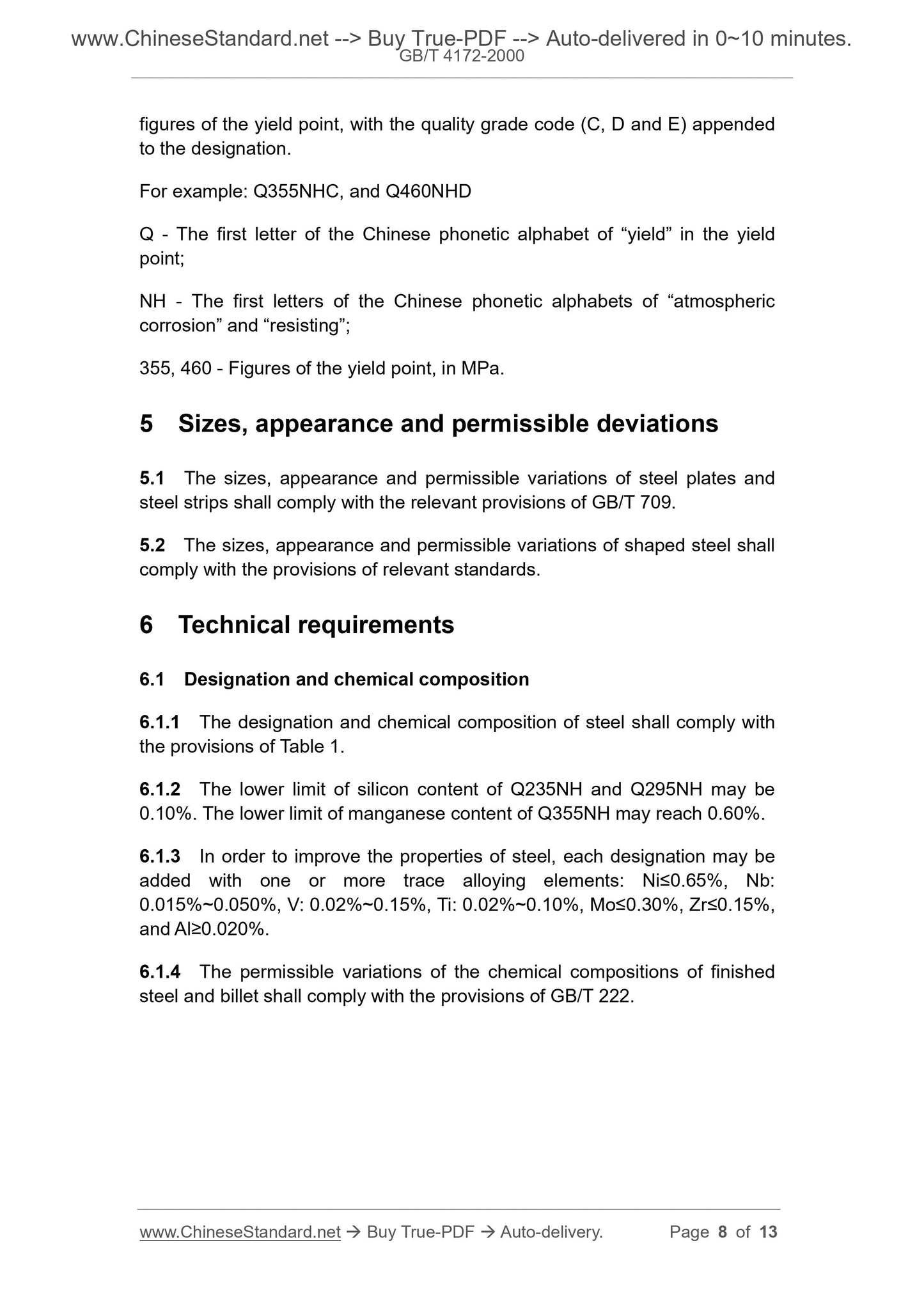1
/
of
6
www.ChineseStandard.us -- Field Test Asia Pte. Ltd.
GB/T 4172-2000 English PDF (GB/T4172-2000)
GB/T 4172-2000 English PDF (GB/T4172-2000)
Regular price
$70.00
Regular price
Sale price
$70.00
Unit price
/
per
Shipping calculated at checkout.
Couldn't load pickup availability
GB/T 4172-2000: Permanent magnetic material of rare earth cobalt
Delivery: 9 seconds. Download (and Email) true-PDF + Invoice.Get Quotation: Click GB/T 4172-2000 (Self-service in 1-minute)
Newer / historical versions: GB/T 4172-2000
Preview True-PDF
Scope
This Standard specifies the definitions, sizes, appearance, technicalrequirements, test methods, acceptance rules, as well as packaging, marking,
quality certificate, etc. of the atmospheric corrosion resisting steel for welded
structure.
This Standard applies to the hot-rolled steel with atmospheric corrosion
resistance for bridges, buildings and other structural members, including steel
plates, steel strips and shaped steel, with a thickness of up to 100mm.
Basic Data
| Standard ID | GB/T 4172-2000 (GB/T4172-2000) |
| Description (Translated English) | Permanent magnetic material of rare earth cobalt |
| Sector / Industry | National Standard (Recommended) |
| Classification of Chinese Standard | H40 |
| Classification of International Standard | 77.140.20 |
| Word Count Estimation | 8,834 |
| Date of Issue | 2000-10-25 |
| Date of Implementation | 2001-09-01 |
| Older Standard (superseded by this standard) | GB/T 4172-1984 |
| Quoted Standard | GB/T 222-1984; GB/T 233.3-1988; GB/T 223.5-1997; GB/T 223.8-1991; GB/T 223.9-1989; GB 223.10-1991; GB/T 223.11-1991; GB/T 223.14-1989; GB/T 223.16-1991; GB/T 223.19-1989; GB/T 223.23-1994; GB/T 223.24-1994; GB/T 223.26-1989; GB/T 223.27-1994; GB/T 223.30 -1994; GB/T 223.39-1994; GB/T 223.40-1985; GB/T 223.53-1987; GB/T 223.58-1987; GB/T 223.59-1987; GB/T 223.60-1997; GB/T 223.61- 1988; GB/T 223.62-1988; GB/T 223.63-1988 |
| Regulation (derived from) | Announcement of Newly Approved National Standards No. 17 of 2008 (total 130) |
| Issuing agency(ies) | State Quality and Technical Supervision |
Share
